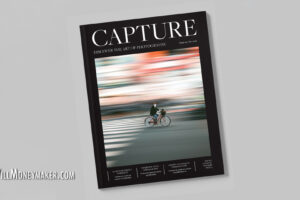A while back, we discussed how to critique your own photos in the post “Learning to Be Your Own Worst Critic.” To me, critiques are such an important skill that it’s worth it to explore this topic a little more. For some of us, it’s a little bit easier to critique our own work simply because we are so familiar with it. We’ve already spent hours laboring over each photograph, so there is a good chance that we’re already at least somewhat aware of the image’s weaknesses.
But someone else’s work? It’s much too easy to make a quick pronouncement and then scroll past.
Unfortunately, such “gut reaction” critiques help no one — not the photograph’s owner, and certainly not yourself. Even if you choose not to share your critiques with others, learning how to objectively judge photographs will help you understand the things that make or break images. Use the following tips to improve your critiquing skills.
Critiques Take Time
One of the wonderful things about photography in this day and age is that we are exposed to lots of it. From Facebook to Flickr and other websites, we could spend all of our time looking at images if we so desired. As nice as it is to be able to learn from images by photographers from around the world, this ready access to millions of images comes with a major downside.
You see, the Internet promotes brevity in all things — skim this article, skip to the good parts of that video, scroll past a dozen images in less than a minute. However, in order to properly critique an image, you need to spend time with it. Take thirty minutes, an hour or a whole day and really get to know the image that you’re critiquing before you pass judgment on the photographer’s work.
Think about it this way: You wouldn’t buy a coffee table book, flip through it as quickly as you could and then place it on the coffee table, never to be looked at again. Nor would you visit an art museum and then speed walk your way through each of the exhibits. Photography, whether in a book, a museum or online, deserves more than just a passing glance and an instant judgment.
Keep an Open Mind
Every photographer has techniques, post-processing methods and other effects that they enjoy and others that they dislike. This means that as you critique the work of others, you’re going to run into things that you don’t like. Perhaps you simply can’t stand HDR imagery, or you’re not a big fan of selective coloring. Some people really dislike things like soft focus effects, while others swear by them. Either way, your goal should be to remain objective. Judge each photo on its own strengths and weaknesses, and not on your own personal preferences.
The Photographer’s Intent
In the post I linked above, I discussed how to evaluate for technical flaws. As you critique an image, you should definitely keep an eye out for things like over or under-exposure or unnecessary blurring. However, before you pronounce judgment on any seeming flaws that you might find, you should ask yourself whether or not those flaws were intentional.
If the lighting feels wrong, could the photographer have been trying to make the image feel moody? If the subject is smack in the middle of the frame, could it be because the photographer was deliberately skirting the Rule of Thirds in order to bring even more attention to the subject? Perhaps the photographer meant to do these things or maybe he didn’t — either way, you should take this into account as you develop your critique.
If you think a particular aspect still feels wrong even after you’ve investigated the photographer’s potential motives, then don’t hesitate to point it out. Your critique could help the photographer understand how to achieve the look and feel he was going for with his “deliberate mistakes.”
Always Explain Why
The lighting is off. The horizon line is tilted. The sky is too bright. The shadows are too deep. These are all things that you’ll commonly hear, and perhaps they’ll be part of the critiques that you give. However, these should never be the only things that you say about an image. Always try to give an explanation as you why you feel a certain way. Rather than simply saying, “The sky is too bright,” instead justify your reasoning by saying, “With the sky as bright as it is, you’ve lost some of the interesting detail in the clouds.” Broader explanations not only point out things that need improvement, but they also help the photographer to understand how to improve them.
So why is it that critiques are so important? Because they’re yet another opportunity to hone your own skills. By examining the work of others, you’ll be able to apply their lessons to your own images.






